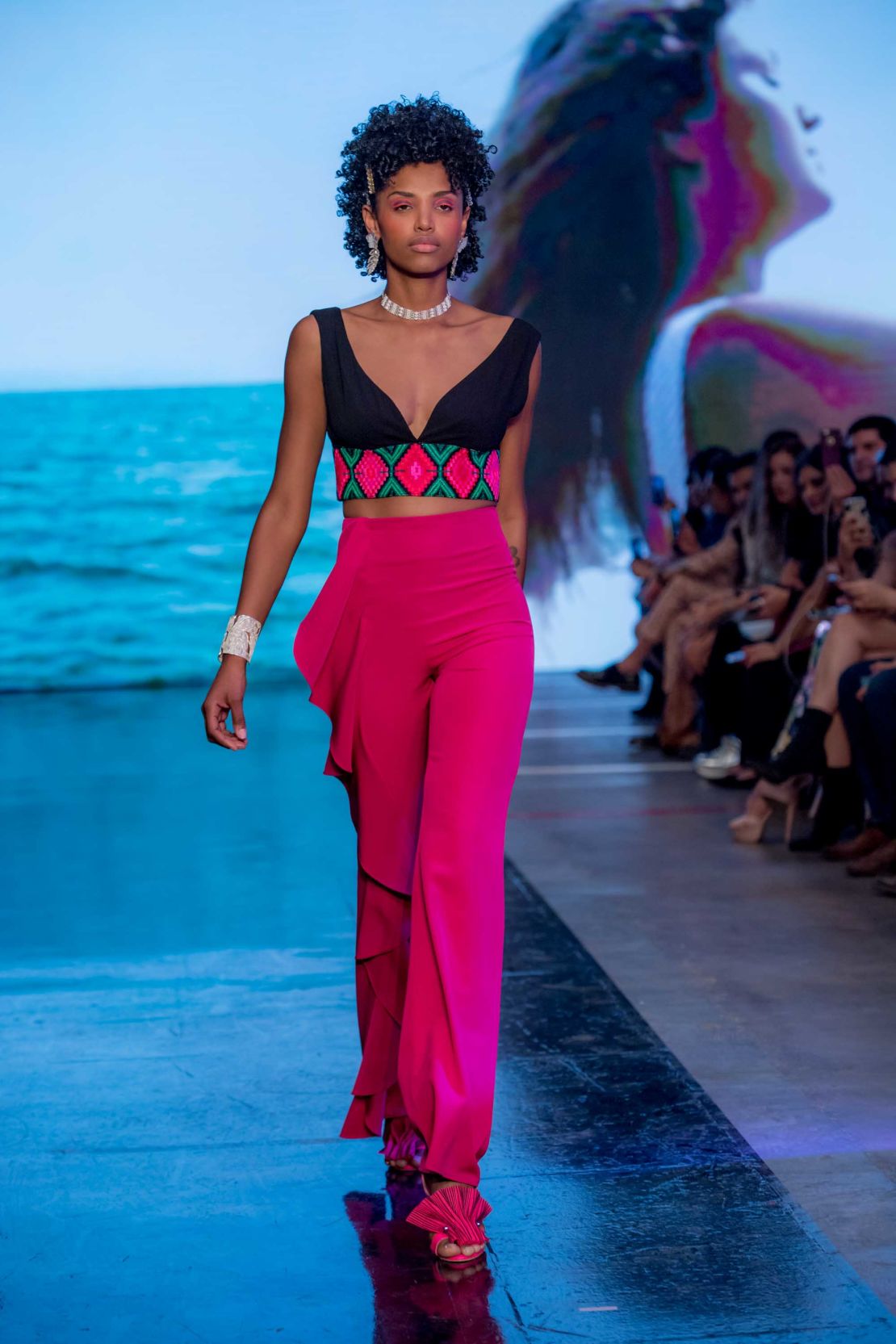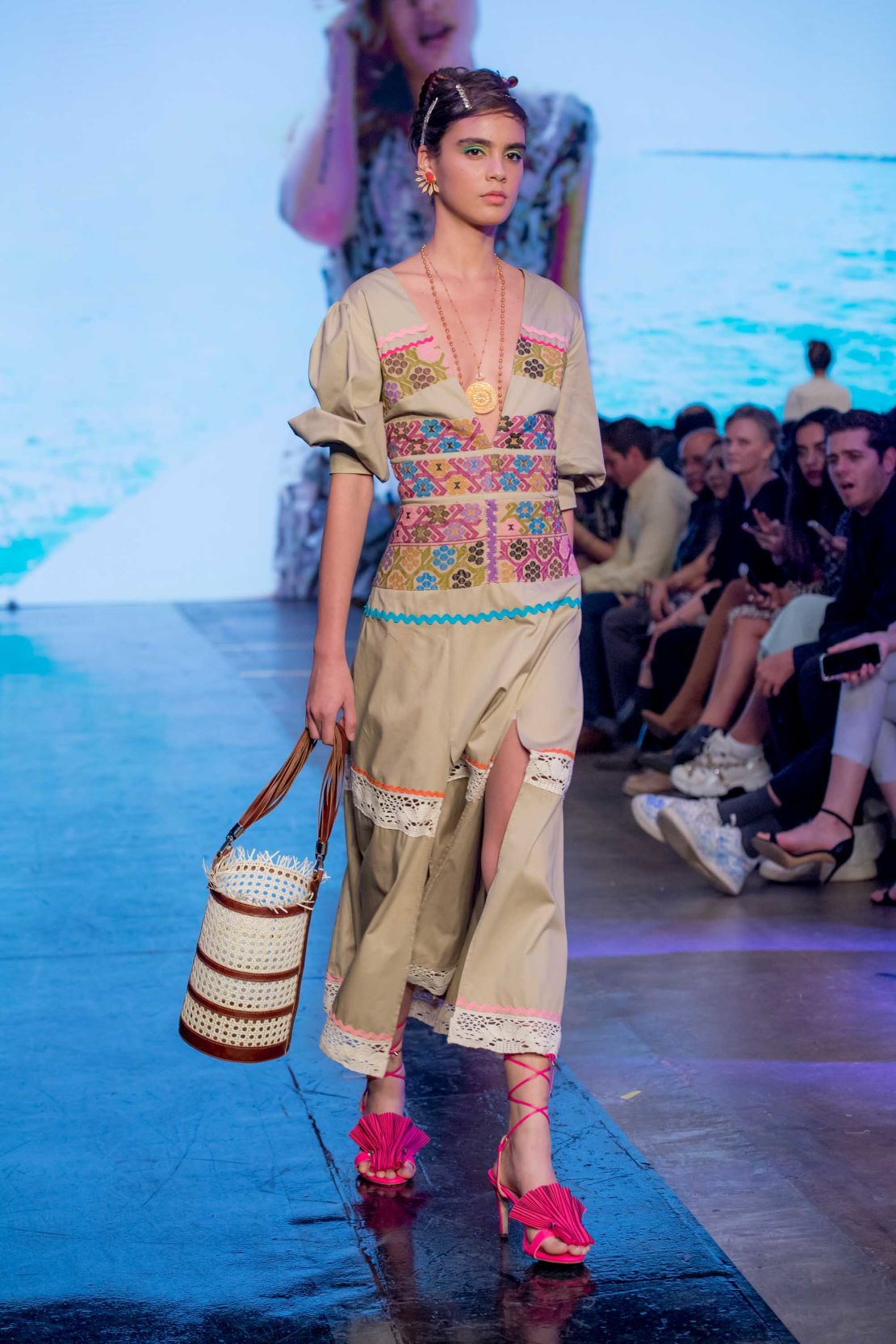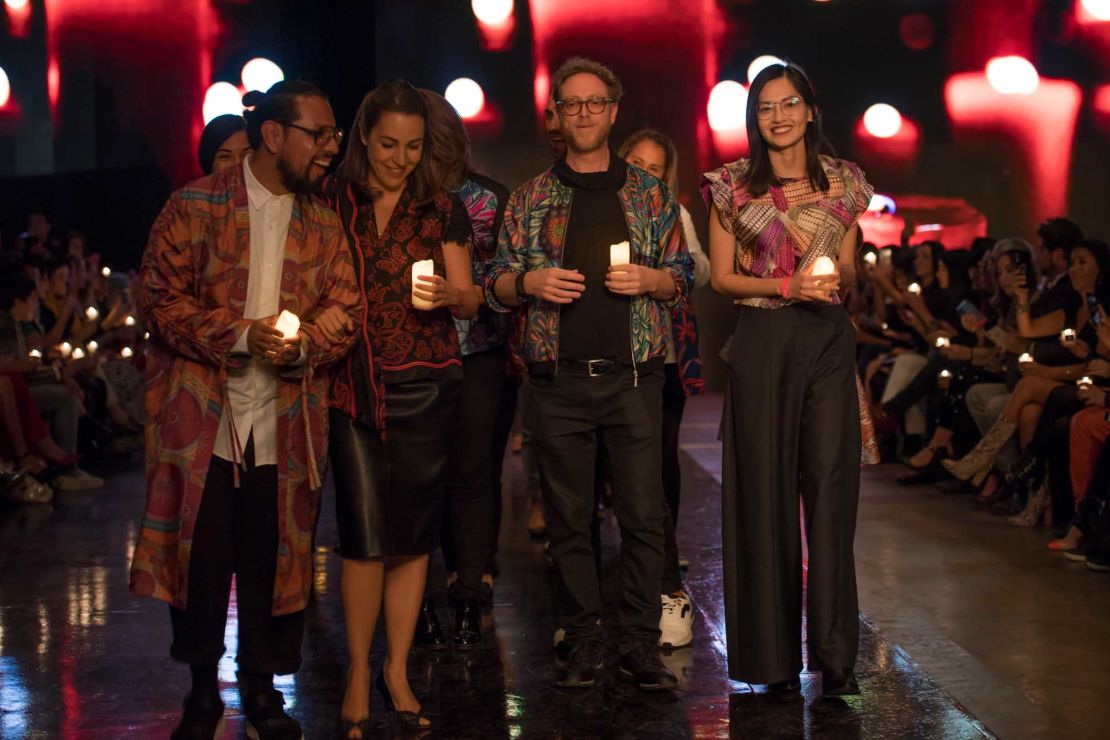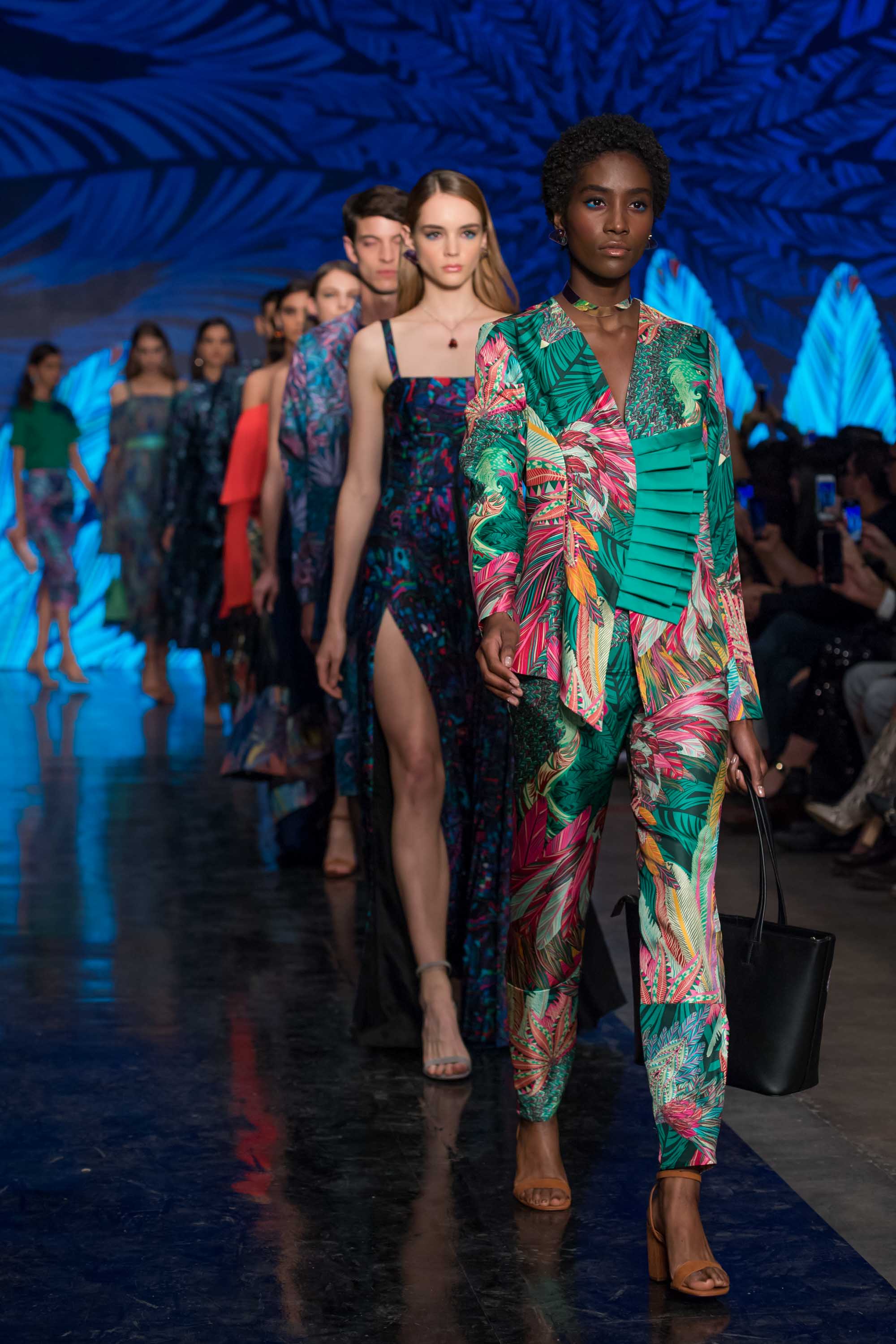It’s easy to see why contemporary designers seek to evoke traditional Mexican handcrafts and folk art through their collections.
Brightly-colored embroidery and intricate beading reflect skills passed down for generations, while the patterns themselves carry meaning far beyond modern print design.
At the recent Mercedes-Benz Fashion Week Mexico City, designers emphasized the collaborative nature of their relationship with local artisans, showing embroidered gowns and garments featuring historic emblems and motifs.
These were clothes created with modern techniques, but infused with centuries-old tradition. Designer Lydia Lavín, for example, worked with artisans from the Huichol community, an indigenous group from Mexico’s Sierra Madre Occidental mountain range, to create gowns adorned with embroidery and beadwork.

The brand, which launched in 2004, has cultivated partnerships with more than 3,000 artisans from 14 indigenous communities across Mexico.
“Being able to understand the way of thinking of the artists and all the rituals, the importance of preserving techniques and showing the world what they can do is the most important thing,” Lavín said.
Sandra Weil’s collection included traditional methods from Oaxaca, a Mexican state well-known for its textile traditions, hand embroidery and woven materials made on backstrap looms. Embroidered pieces included depictions of the bird of paradise, a flower native to Mexico.
Not only did she seek inspiration from Mexico, but worked with artisans with roots in Venezuela, Columbia, Argentina and Peru. “I think we take a very contemporary view on the embroidery’s traditional heritage,” Weil said.
Weil works with a team of about 16 people each season, including several local artisans. “It’s very fulfilling to give back to the economy and the local people that work with us,” she said.
Last month, she showed her collection in Paris for the first time. “I think we have so many things to give to the rest of the world that have not yet been seen in the high-end world of fashion,” she said. “I’m very honored to be one of the people sharing these beautiful techniques.”
“In Mexico, indigenous artisans have a long history of collaborating not only with fashion designers but with creators in general,” said Tanya Melendez-Escalante, the senior curator of education and public programs at the Fashion Institute of Technology’s New York museum.

According to Melendez-Escalante, at the beginning of the 20th century, after the Mexican Revolution, the country’s government created public projects to blend pop culture and fine arts. “One good example is the work of the Mexican muralists, who portrayed indigenous Mexico in many of their works,” she said.
“Fashion designers also participated in this impetus … there were designers such as Ramón Valdiosera who worked with artisans and many designers were avid textile collectors.”
Known as the father of the color “Mexican pink,” Valdiosera was not only a fashion designer but a cartoonist, author and artist whose work reveled in traditional Mexican art.
Fashion house Pineda Covalin continued this sense of celebration with their show at Fashion Week Mexico, which centered on Mexican emblems and designs. “The main objective has been to promote the Mexican richness and the Mexican culture, not only in Mexico, but around the world,” co-founder Ricardo Covalin said.
“It was 1996 when we created the brand. In the global situation of the world, Mexico just signed a free trade agreement with North America. Mexicans wanted everything from outside and they forgot about our roots, our heritage. And so we started our brand to be proud of who we are as Mexicans.”
The label’s spring 2020 collection incorporated Aztec and Mayan prints, with a recurring skull motif as a reference to Día de los Muertos (Day of the Dead). The show’s conclusion, meanwhile, drew on the Aztec ritual Fuego Nuevo (New Fire Ceremony).
Audiences were directed to light candles, while all the artisans and designers who worked on the collection walked the runway to take a bow. “It was important for all of them to come out, and then light the new fire,” Covalin said. “In the ancient ritual, you burn the old things and then you start a small fire, and you share it with all the people.”

The fashion industry’s incorporation of indigenous Mexican design has sparked controversy in the past: Take, for instance, Carolina Herrera’s Resort 2020 collection, which drew on embroidery from Hidalgo’s Tenango de Doria community as well as shawls associated with Saltillo in the state of Coahuila.
Mexico’s Culture Ministry sent a letter to Herrera and creative director Wes Gordon, asking them to “publicly explain on what basis (the brand) decided to make use of these cultural elements, whose origins are documented, and how this benefits the communities.”
Gordon reportedly responded that the collection “pays tribute to the richness of Mexican culture.” Others say it was a clear case of cultural appropriation that was unnecessary given the historical willingness of Mexican artisans to share their expertise.
Melendez-Escalante stressed that designers who do collaborate with indigenous artisans should respect their creative input. “Their creativity is part of the collection and they are remunerated as equal players,” she said.
But some collaborations can be exploitative, Melendez-Escalante said, with designers using artisans “as labor to produce embroidery or other techniques for their collection.” Not all indigenous artisans are properly compensated, she added. “Many artisans have to balance life in the fields with producing their work, so fair pay is of primary importance to them.”
In Melendez-Escalante’s opinion, most Mexican designers don’t seek to exploit the artisans they work with.”Traditional crafts are part of Mexico’s artistic and cultural heritage,” she said. “I think designers are constantly looking to honor our past and present, and these collaborations are mostly about pride in who we are.”



